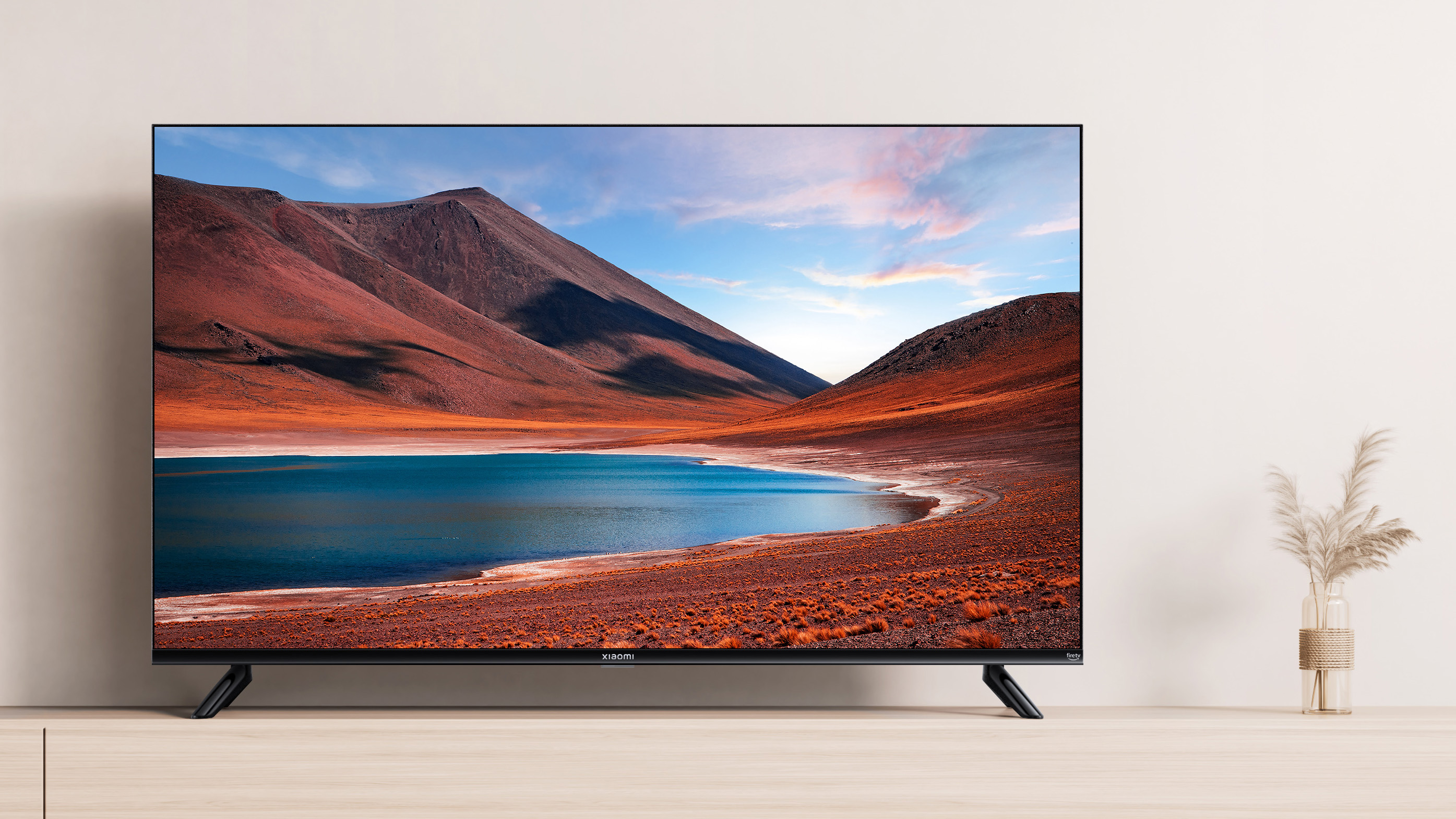Xiaomi's new cheap Amazon Fire TVs are here to take on Samsung and Philips
Super-cheap TVs with some great specs

Xiaomi has just announced a new super-affordable TV model for the UK: The Xiaomi TV F2 Series, which launches on June 6 at Amazon UK. The two big attractions here are the price – 43 inches for £339, 50 inches for £449, 55 inches for £499 – and that it has Amazon Fire TV built in as its smart TV software.
Fire TV is much slicker and easier to use than the basic smart TV software you get on most cheaper TVs, and has a wider selection of apps and services. In the UK, you naturally get iPlayer, All 4, ITV Hub and NOW, alongside all the big-name international options. Apple AirPlay 2 is also supported, so it's easy to stream video or pictures to the TV from an iPhone, iPad or Mac.
You also get a personalised home screen that pulls content you're likely to want to watch next from your various services, and voice control powered by Alexa. This means that not only should it work very well generally (it does on other Fire TV devices), but you can also do other useful Alexa things with it, including controlling smart light bulbs or seeing who just rang your Ring doorbell.
Elsewhere, the Xiaomi TV F2 Series impresses in a few hardware areas, but is more limited in others, as you'd expect for the price. We love that it has four HDMI ports, because budget TVs tend to offer three or even two, so it'll really save you a plug-related headache down the line.
Xiaomi notes that the HDMI ports are HDMI 2.1, but don't get too excited: the only HDMI 2.1 gaming feature supported here is ALLM, for auto-switching to a low-latency gaming mode. There's no 120Hz support of any kind (the screen is 60Hz), and there doesn't appear to be any kind of VRR support, but we've asked Xiaomi to confirm that, and will update when we get a response.
Xiaomi also hasn't yet confirmed whether HDMI ARC or eARC is supported for adding a soundbar, though the F2 Series does include optical digital out. We'll update this story when we know.
As for built-in sound, there are two 12W speakers with support for Dolby Audio, DTS Virtual:X and DTS-HD… no Dolby Atmos, though.
Get daily insight, inspiration and deals in your inbox
Sign up for breaking news, reviews, opinion, top tech deals, and more.
Similarly, HDR support is just regular HDR10 – there's no Dolby Atmos or HDR10+. These are options you can get on similarly priced TVs from other makers, including Samsung and Philips, which are two of the biggest names for great TVs in this kind of price range. Those companies really know how to pack the most tech for the price into a TV… but Xiaomi has proven time and time again that it knows how to do the same thing with all manner of other tech, so we wouldn't bet against it really delivering with these TVs. Especially with tempting specs like the four HDMI ports – it may not be sexy, but it's very useful.
Analysis: the cheap smart TV software battle has begun
For a while, the main problem cheaper TVs had in the age of smart TVs is that any built-in streaming software was usually slow, hard to use and lacking in broad app support. Bigger companies could use the same platform as their high-end TVs – which is what Samsung and LG do, but that didn't help smaller companies.
In the last few years, that's changed. We now have manufacturers building TVs specifically to run Roku TV and Amazon Fire TV software, both of which started life and on external streaming sticks, and became highly polished and capable software systems. Migrating them inside the TV means that when it comes to actually finding something to watch, you can cheap TVs that are actually even more user-friendly and well-specced than high-end TVs.
But this has barely begun. Roku TVs have only just started reaching the UK, and Fire TVs are only just starting to come from an increased number of manufacturers. Samsung keeps bringing down the price of its TVs to compete with the likes of these Xiaomi models, and even LG has said it will actually offer its smart TV software to other makers.
The good news is that this scuffle is only good news for TV buyers – if all smart platforms are largely equally good, they'll be competing to get on the most TVs they can, or to go slightly cheaper than the competition… it's going to be easier than ever to get a TV with with all the streaming features you could want on any budget.

Matt is TechRadar's Managing Editor for Entertainment, meaning he's in charge of persuading our team of writers and reviewers to watch the latest TV shows and movies on gorgeous TVs and listen to fantastic speakers and headphones. It's a tough task, as you can imagine. Matt has over a decade of experience in tech publishing, and previously ran the TV & audio coverage for our colleagues at T3.com, and before that he edited T3 magazine. During his career, he's also contributed to places as varied as Creative Bloq, PC Gamer, PetsRadar, MacLife, and Edge. TV and movie nerdism is his speciality, and he goes to the cinema three times a week. He's always happy to explain the virtues of Dolby Vision over a drink, but he might need to use props, like he's explaining the offside rule.